Description
Jesus spoke and taught in parables.
Can parables still be used today?
A Sunday School teacher uses Christmas symbols such as the tree, the holly and the candy cane in a “parable kind of way” to get through to a group of less than eager young children.
A very easily staged drama.
Cast: 15+
- Adult actors:
- John, storyteller
Vi
Ed
Donna
Child actors with speaking parts (preteen)
Freddie, disadvantaged kid
Amanda
Stephen- Child actors, some of which have small speaking part (preteen)
Bible Reference: several
Set: very plain Sunday School room
Sound: standard
Song:
Lighting:standard
SFX:
Props: Bible
Costumes: standard
Special Instructions:
Time: 35
Sample of script:
John is sitting onstage, a group of children sitting on the floor, listening as John tells a story
Ed, Vi and Alice are listening, smiling approval
Donna comes on stage just before the first line is delivered, listens, not really impressed
John: So that’s the story of the Christmas candy cane and how, through the candy cane, we can better understand Christmas.
Child1: That was an awesome story.
Child2: Mr. R sure does tell good stories.
Child3: Yeh, sure does.
Child4: Yeh, but let’s get outta here, get our candy canes before they are all gone.
children leave stage
Alice: John, you are an excellent storyteller!
Ed: He certainly is Alice, the kids in all the Children’s Church classes love to hear John’s stories. Hardest working guy in the Children’s Church department here at Hope International Church!
John: Now that’s not true Ed, we at Hope International are blessed with so many people who spend tons of time telling the story of Jesus’ love to our kids. Each leader has their own way of telling the story of the love of God, my way just happens to be storytelling.
Vi: Well frankly I don’t know how you do it John. When I try to get the kids to settle down for a story they are off and in another world within minutes.
Donna: Well, you have always impressed me with your storytelling, and even my Graham seems mesmerized when he listens to you . . and that’s saying something; Graham is the world’s most fidgety kid.
And please don’t take offense John, but I’m not sure your story about the candy cane was appropriate for Children’s Church.
Alice, shock: Donna, how can you say that? . . I thought John’s story was excellent and very insightful. And the kids loved it!
Donna: Alice I am not speaking against John or his storytelling, . . but . . . the story is technically inaccurate.
Vi: I don’t understand. . . Technically inaccurate in what way?
Donna: John is using symbols, like candy canes, to illustrate the birth and life of Jesus, and those symbols used in the story are simply not Christian in origin.
Ed: Which symbols Donna?
Donna: Hey wait, this is looking like I am going against John, and that’s not what I am trying to do.
John: No that’s fine Donna, you have concerns and we should discuss it, we are all friends here and we all want what’s best for our kids. . . Go ahead Donna, please.
Donna: Well, OK John in your story you told that mistletoe is a symbol of our dependence on God; that is simply not found anywhere in the Bible, let alone in the Christmas story.
Alice: Mistletoe has no roots of its own. It attaches itself to another tree for its nourishment and support. If that tree should die, the mistletoe will die as well.
Vi: And in my mind that is true symbolism of the Christmas story. God fully knew that man could not stand on his own spiritually speaking, and so it was that God sent his son Jesus that we could affix our hope of salvation to Jesus. We live and exist only because of God and his love through Jesus.
Donna: And are you saying that we teach our children about the symbolism of the Christmas tree, even though the fir tree was first worshipped by pagans?
Vi: Pagan symbols, including the fir tree, were, after all, made by God.
Donna, frustrated:
But these symbols are not from the Bible and therefore are not biblical!
John: Your point is valid Donna. But neither were the sower, the pearl or the mustard seed in the scrolls when Jesus was on earth.
Donna, confused:
The sower, the pearl and the mustard seed? . . . I have no idea where you are going with this!
John, smiles: Sorry Donna, I don’t mean to confuse you. But what I am saying is that Jesus spoke in symbolized stories, stories he called parables, to make people listen to his message. And he used the sower, the pearl, the mustard seed and many other common items in his parables.
Donna: Jesus used parables to teach those around him, so they would learn. I will admit that the kids do pay attention to your stories John, but are they learning the basics they need to know?
Vi: Actually Donna, if you check what Jesus said to his disciples in Matthew chapter 13, he wasn’t speaking in parables so that people would learn, in fact Jesus said he spoke in parables so some of those who heard wouldn’t understand.
Ed: I always wondered about what Jesus said, “Those who have ears to hear let him hear.”
Vi: Seems to me Jesus spoke in parables to make people, those with ears to hear, look deeper for a meaning.
John: And that is what I am trying to do when I tell stories to the children. I want them to listen to the story, but even more importantly, I want these stories to urge the kids to dig deeper into the meaning behind the story.
Donna: So you are saying your storytelling is your parables?
John: Well I am not claiming to be in the same league with Jesus, but my aim is to create a healthy hunger for learning in the minds of the kids.
Donna, thinking:
So it’s the parable of the candy cane?
John: Well the story is about more than just the candy cane.
Donna: I realize that, its all the things that I have always felt kept us away from the real essential issues of Christmas story.
Ed: And there is no doubt they can, and often do.
Alice: I guess it is up to Christians like us to ensure that we all focus on the essential issues.
Ed: But maybe we can use some parable type stories to help us, and non-Christians, dig deeper into the message of Christmas.
Donna: Interesting. . . The parable of the candy cane!
Alice: What’s wrong with that?
Donna: Nothing, actually. . . (thinks) . . In fact I maybe kinda like the concept.
John: Well, pray for me, here comes the fourth grade Sunday School class, . . . and I don’t have to tell you that they are some of our . . . more outspoken kids!
Donna, laughs: We will pray, for sure . .
group of children enter stage, sit in downstage locations, John moves to them
John: Hi guys, welcome to fourth grade church.
various comments of “hi” “hello Mr. R” etc.
Freddie: When are we gonna get candy canes?
Amanda: Teacher said you were all about candy canes today.
John, smile: Well Freddie, Amada, we are going to be talking about candy canes . . . .
Freddie: “Talkin’?” . . . . Oh brother!
Amanda: I could have gone fishing with my dad.
Stephen: Knock it off you guys; this might not be so bad.
John: Well Stephen I promise to try my best to make it “not so bad” and maybe even quite interesting.
Freddie: How long you figure this here will take?
John: Time will just fly by Freddie, you will hardly even notice.
Freddie: Yah right! . . . OK, sooner we get started . . .
John: I will take that as excitement to get started. . ..
Today we are going to be talking about the symbols of Christmas.
1st child: I know about cymbals for Christmas! . . . My Mom is buying my Dad new cymbals for his drums . . (looks around) . . But I promised I wouldn’t blab . . so if you see my Dad don’t say nothing OK?
John: Well I am sure your dad will be real pleased with getting cymbals for Christmas, but that’s not the kind of symbols I was thinking about.
2nd child: Mr. R means symbols, like a Christmas tree.
3rd child: My Dad he hauls the Christmas tree out on Thanksgiving Day, he says the tree gets him in the Christmas spirit.
John: I agree, the Christmas tree does get us thinking about Christmas. And we can learn lots from the Christmas tree . . .
The fir tree stays green all year long, reminds us of what it says in Jeremiah 31:3 that God’s love is everlasting.
And the needles point upwards, reminding us we need to look to God and to be thinking of spending eternity with him in heaven. It says this in Luke 18:


